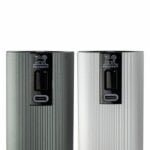Fuel prices have risen to an absolute maximum and no one knows for sure when they will fall, if they will. Find out how you can save gasoline or diesel, but without destroying your car.
Some drivers use neutral and will let the vehicle down a slope while the engine is idling. But this is not a smart thing to do. Apart from the fact that it is not safe, so if the driver is in an emergency situation, the little time to change gears and accelerate the vehicle out of danger, the cars produced for two decades now, are equipped with what is called DFCO – cutting fuel at deceleration.
Thus, modern vehicles have computerized boxes, and without the acceleration being applied the engine management system of a vehicle equipped with DFCO can realize that the vehicle descends a slope and reduces fuel.
The engine will continue to rotate and run as the engine and wheels are connected directly via the transmission. The vehicle will resume fuel burning when acceleration is applied. However, if you decide to go in neutral, the vehicle must use fuel to maintain idling.
Some insist that extra octane is best for your vehicle and will result in better fuel economy, regardless of the vehicle. The truth is a little more complicated.
For starters, every modern vehicle has what is called a “detonation sensor”, and it works like a small microphone that analyzes the indicator sound. Some vehicles have been designed to run on both premium and non-premium fuel. The vehicle’s on-board computer will adjust the air-fuel ratio to compensate for the reduced octane, but usually to the detriment of performance and fuel economy.
Simple ways to save gas and diesel
Usually, the car will run on more fuel than it would have if you had just used more expensive gasoline. Other vehicles are tuned for regular petrol and cannot take advantage of the extra octane of premium fuel.
A common trick is to stop the vehicle at a traffic light. After all, the vehicle that saves the most fuel is the one that doesn’t work. Modern vehicles go a step further with stop-start systems: in essence, the vehicle completely stops the engine when it is stopped or decelerates at very low speeds.
It’s not just a trick, but it has been shown that stop-start systems have a tangible positive effect on fuel economy. However, this does not necessarily mean that any car can or should mimic modern stop and start vehicles.
Also, instead of spending money on fake quick fix solutions, use that money to make sure your vehicle is in the best working order. Worn spark plugs, emission sensors, defective catalytic converters and inflated tires can have a negative effect on fuel economy.

 Renault’s compact family SUV will be called the Symbioz -.
Renault’s compact family SUV will be called the Symbioz -. Peugeot and its new range of salt and pepper mills -.
Peugeot and its new range of salt and pepper mills -. A new Uber Eats ad is being criticized for showing a peanut allergy -.
A new Uber Eats ad is being criticized for showing a peanut allergy -. Pagani announces new track-based hypercar, known as the Huayra R Evo -.
Pagani announces new track-based hypercar, known as the Huayra R Evo -. Introducing the Oscars in the Best Casting category -.
Introducing the Oscars in the Best Casting category -.